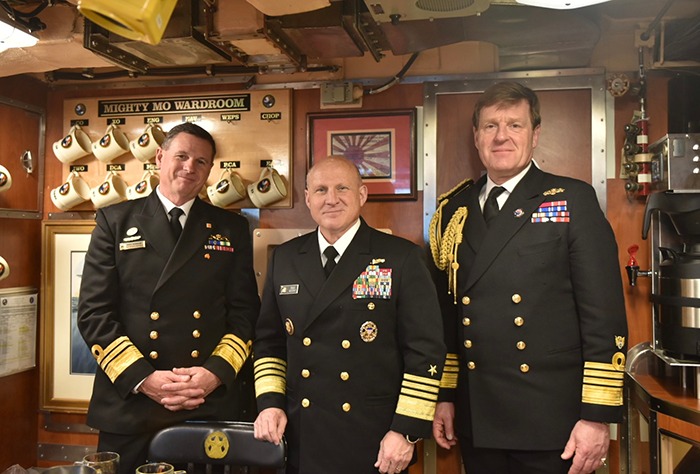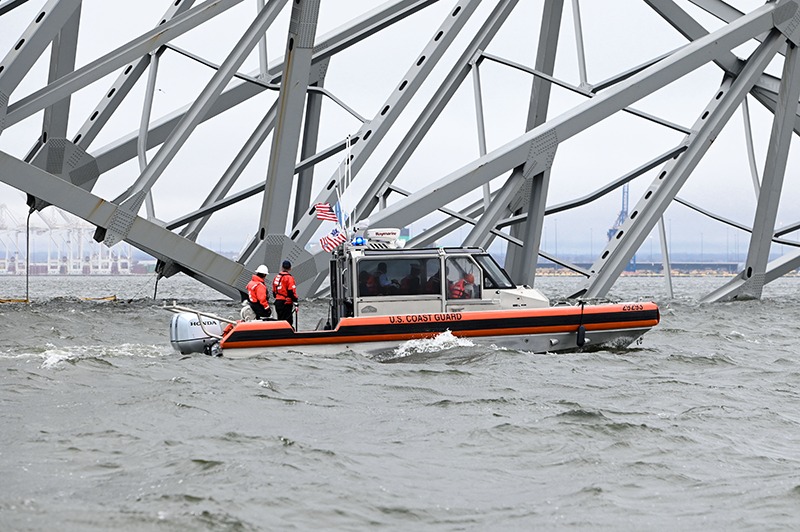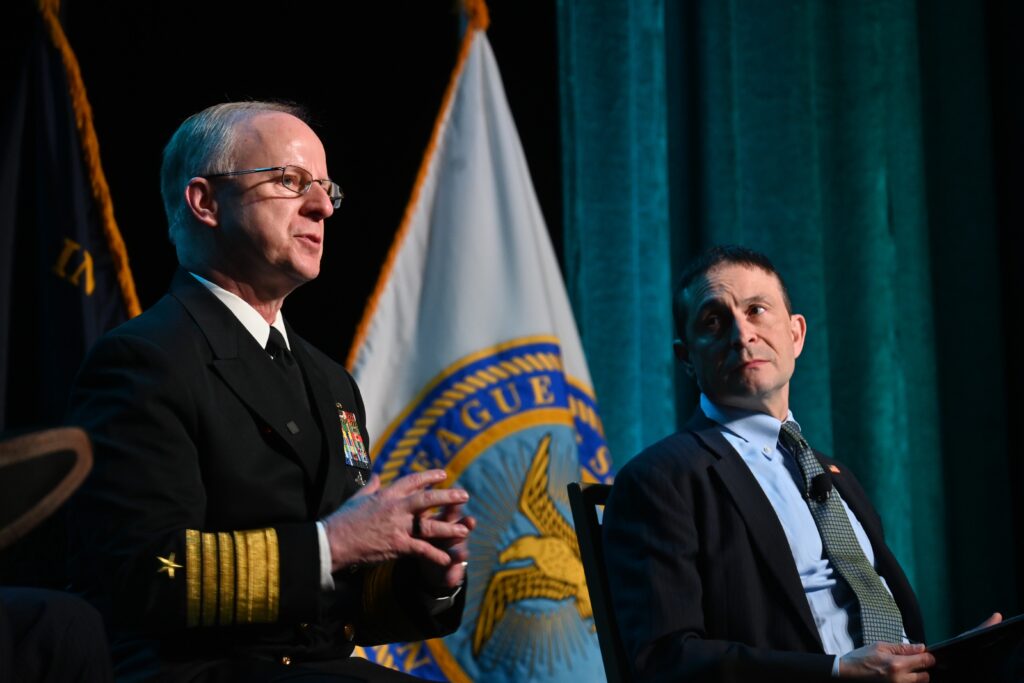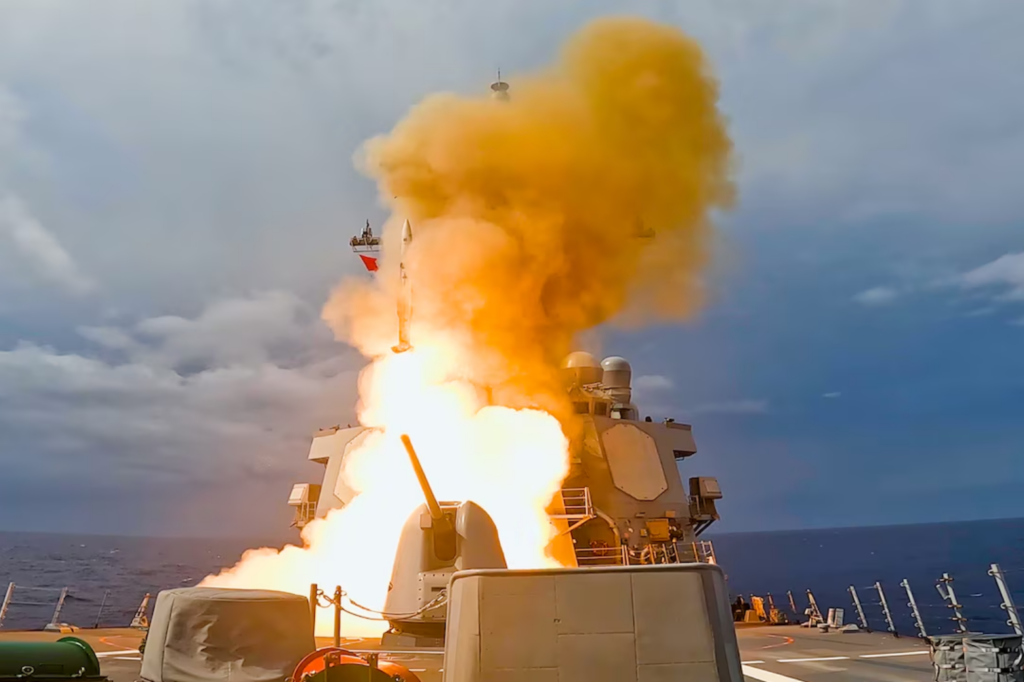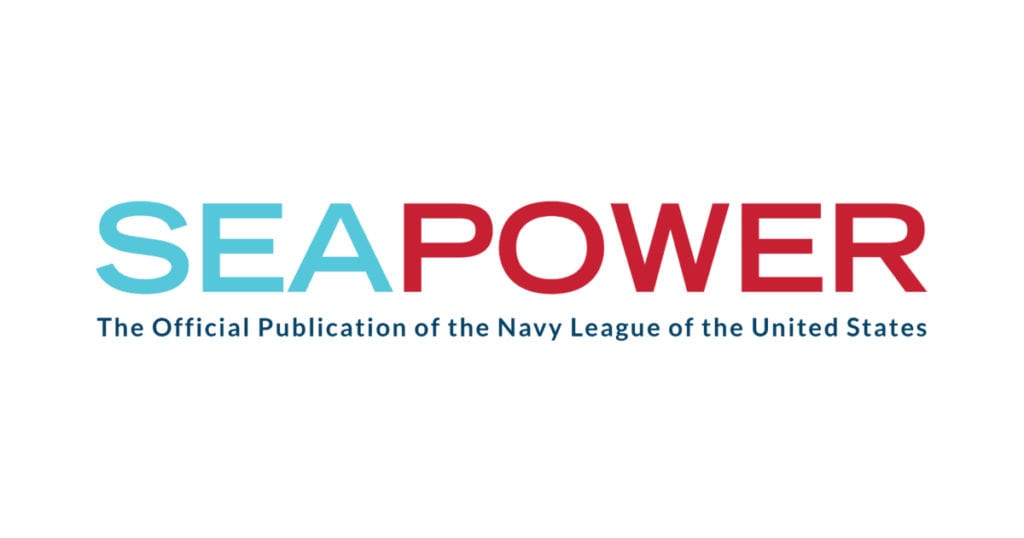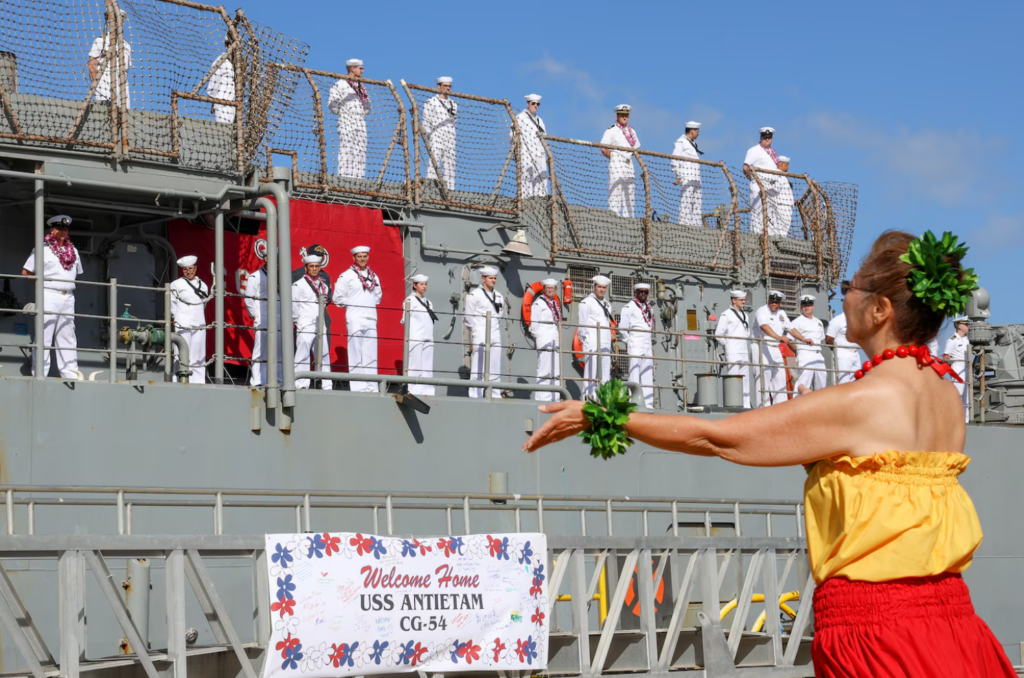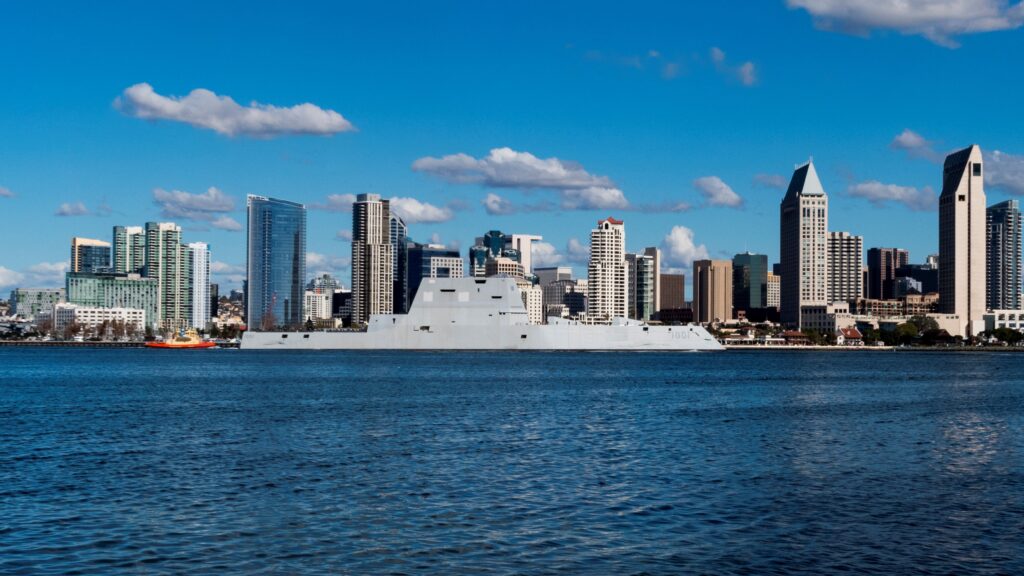Government, Industry Must Meet in ‘Common Place of Excellence,’ Del Toro Says
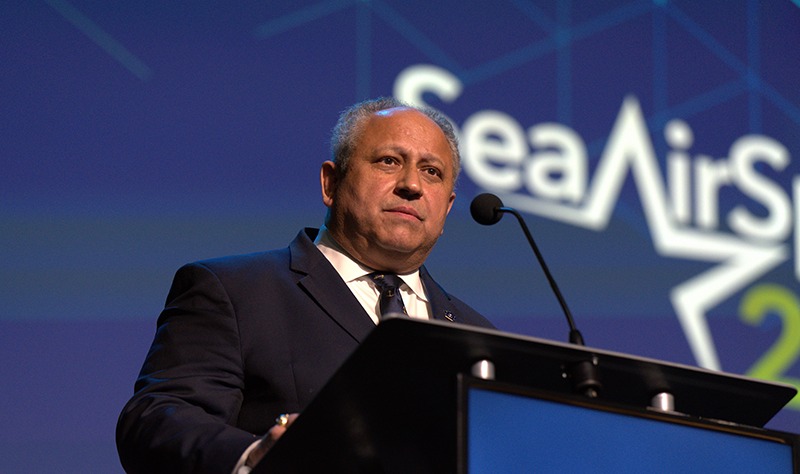
Industry and government alike must modernize their processes and up their game to overcome shipbuilding challenges, Secretary of the Navy Carlos Del Toro said April 9 at the lunch session at Sea-Air-Space, including by working with shipbuilding partners overseas.
Del Toro began the speech with a bit of levity, bringing the U.S. Marine Corps mascot Chesty the bulldog onto the stage, before describing the challenges that face the nation, from Houthi rebel attacks in the Red Sea to the state of the nation’s shipbuilding facilities and workforce.
“You have to understand, we, the nation, abandoned the shipbuilding industry and making the necessary investments in around the early 1980s,” Del Toro said. “Because we thought that somehow the private sector would just take care of itself. And some ways it did. China moved in with cheap labor and labor practices that weren’t fair. In fact, the United States is considering suing China for some of those unfair practices.”
Incentives weren’t made, and after the Cold War the nation lost many of it shipbuilders, he said, adding, “thank God” the nation still has the shipbuilders it does.
“But the fact is, we need more capacity if we want to a grow a Navy fleet. Let me be clear, we need a bigger Navy fleet to meet the challenges of the future. We need to have the industry to be able to grow that capacity. So, this is a whole of government discussion that we’ve initiated in the Navy across the government and there’s a lot of interest that’s growing in many different places throughout government. And I think that you’ll see this actually continue,” he said.
Del Toro cited a recent visit to South Korea, where he saw what could be the future.
“Right now, we build the most capable warships in the world in shipyards that are sometimes decades behind the global technological standard. This is an inefficient approach requiring far too much time and taxpayer dollars. And it’s certainly an approach that is only inadequate to pace our 21st century competitors,” he said.
Japan and Korea, he noted, build high-quality ships “for a fraction of the cost that we do. When my team and I went to South Korea, we were floored at the level of digitization and real-time monitoring of shipbuilding progress with readily available information down to the individual pieces of stock materials. Their top executives can tell us to the day when ships would actually be delivered,” he said.
“It’s an ethos of commitment to constant improvement that is the foundation of their reputation, consistently delivering on time and on budget, even during COVID. The daunting challenges that we face are also an opportunity, a great opportunity to partner with a greater number of shipbuilders here in the U.S. and with our closest allies abroad. We have an opportunity to attract the most advanced shipbuilders in the world to work with our first-rate ship builders of the world … and invest in commercial shipyards here at home,” Del Toro said. “This will allow us to modernize and expand our shipbuilding industrial capacity, creating good paying new-collar American jobs that come with a healthier and more competitive shipbuilding workforce.”
Previous decades of investment are what have enabled the Navy to fight off the Houthi rebels as effectively as it has, Del Toro said.
“Ladies and gentlemen, sometimes I think the American people think that this is somehow commonplace to do this, as our CNO said the other day. There is absolutely nothing commonplace about this. Our United States Navy has been attacked. We have conducted strikes like we haven’t seen in many ways since World War II.”
He said investments in training have led to the successful engagements, along with the investments in the Aegis Combat System and the SPY-1 radar
“Those investments are the reason why our Sailors and Marines have been able to combat thethis with proficiency that they have demonstrated to win the fight of the future,” he said.
The services must make similar investments today in robotics and other technologies. Del Toro noted the service has newly introduced the robotics warfare specialist rating. The RW “will be the subject matter expert for computer vision, mission, autonomy, navigation, autonomy, data systems, artificial intelligence and machine learning,” he said, calling it a “significant milestone in our journey towards achieving a truly hybrid fleet.”
And, he said again, the nation needs to investment in shipbuilding.
“The findings of the 45-day comprehensive shipbuilding review have underscored too many of our industrial partners are behind schedule and over budget on our highest priority programs. Let’s be clear, I want American industry to thrive, as a business owner for almost two decades. I understand your perspective. I’m pushing our shipbuilding industry to invest in itself to get better, be technological leaders and to once again deliver platforms on time and on budget. We must deliver for the American people because it’s our line of work. We don’t get to make excuses,” he said.
“Of course, there’s work for us to do on our end and the government as well. I’m determined to address the longstanding challenges in our procurement processes that cause industry heartburn as they tried to do business with us. And there are many that we have to work through. I expect our leaders in the government to foster culture of excellence and accountability across our own acquisition workforce.
“The point is this,” Del Toro said. “Just as our country needs you and industry to be at the top of your game, I’m determined to ensure that we and the Department of the Navy are also on the top of our game. We must meet industry in a common place of excellence.”
